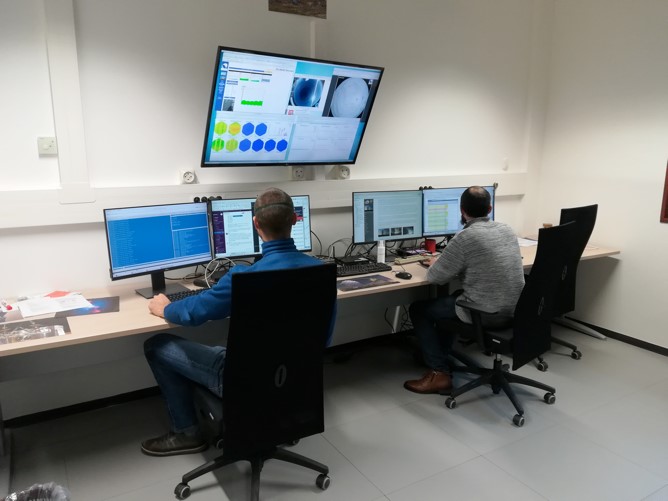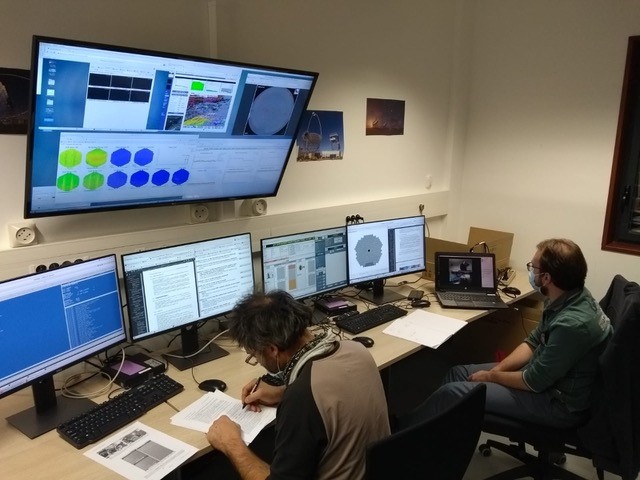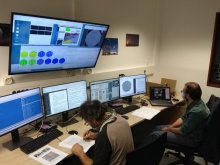Remote operations of the Large Size Telescope
Despite the difficulties due to the covid-19 pandemic, the operations of CTA’s first LST telescope continue on the island of La Palma in the Canary Islands, CTA’s northern hemisphere site.
Since the end of 2018, the first LST (Large Size Telescope), installed on the site of the CTA experiment, is being adjusted. Staff from the various contributing institutes have been taking turns operating the telescope since then (Enrique Garcia told us about it last fall).
Until the end of 2020, these operations were carried out entirely on site, as for all similar experiments currently in operation (HESS in Namibia, MAGIC in the Canary Islands…). However, since the resumption of activities following the lockdowns in Europe last spring, physicists’ access to the site has become more complicated and increasingly difficult to plan. This situation has encouraged the LST Collaboration to set up remote operations.
Since January 2021, the nights of observations have been covered by a small team on site, which carries out the operations requiring mainly physical intervention, and two teams, one in Europe and one in Japan, respectively taking care of the first and second half of the remote night shifts.

Frederic Gillardo, who was due to travel to La Palma as “Shift leader” in December, had the opportunity to test this way to operate. He carried out his role from the brand new control room installed by the LAPP in the Maison de la Mécatronique. Several computers and screens were made available to connect to the telescope network and to visualize in real-time what is available in the control room of the site in La Palma. The team can visualize the 12 screens of the control room and carry out the control actions of the telescope thanks to No Machine connections, with an almost imperceptible latency time.
Since it was the very first time that such operations were implemented, part of the LAPP team assisted Frederic during this period. Notably Enrique Garcia, who had completed a period of observation on site 2 months earlier, greatly contributed to compensate for the physical absence of the telescope during the operations. Mathieu de Bony, Pierre Aubert, David Sanchez, Gilles Maurin and Armand Fiasson also took turns.

This very first observation shift helped the LST Collaboration to improve the organization of these operations and, in particular, the distribution of roles between the different teams. The group covered another observation period in January 2021. Mathieu de Bony acted as shift leader for the 6pm-1am time slot, assisted by David Sanchez and Armand Fiasson, again from the LAPP.
In the coming weeks, the group plans to carry out tests from this control room for the real-time analysis of the LST data for which it is responsible. This is the software that allows the data collected by the telescope to be processed within a few seconds after acquisition, in order to quickly visualize, for example, if a transitory event followed by the telescope is detected, and possibly to be able to generate an alert for partner telescopes as quickly as possible. This software is currently being tested on the LST1 and is intended to become the tool of the CTA network.
Learn more:
- Enrique Garcia’s testimony after his 3-week shift in La Palma: https://lapp.in2p3.fr/spip.php?arti…
- CTA website: https://www.cta-observatory.org/


